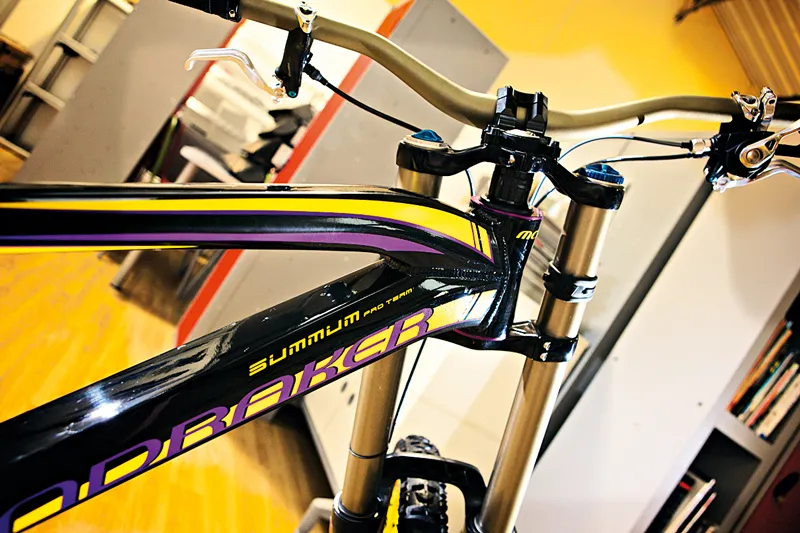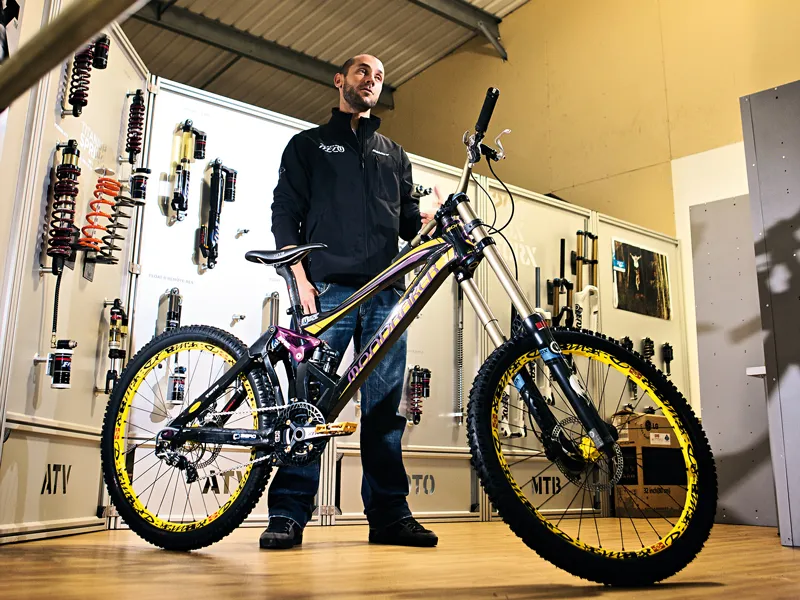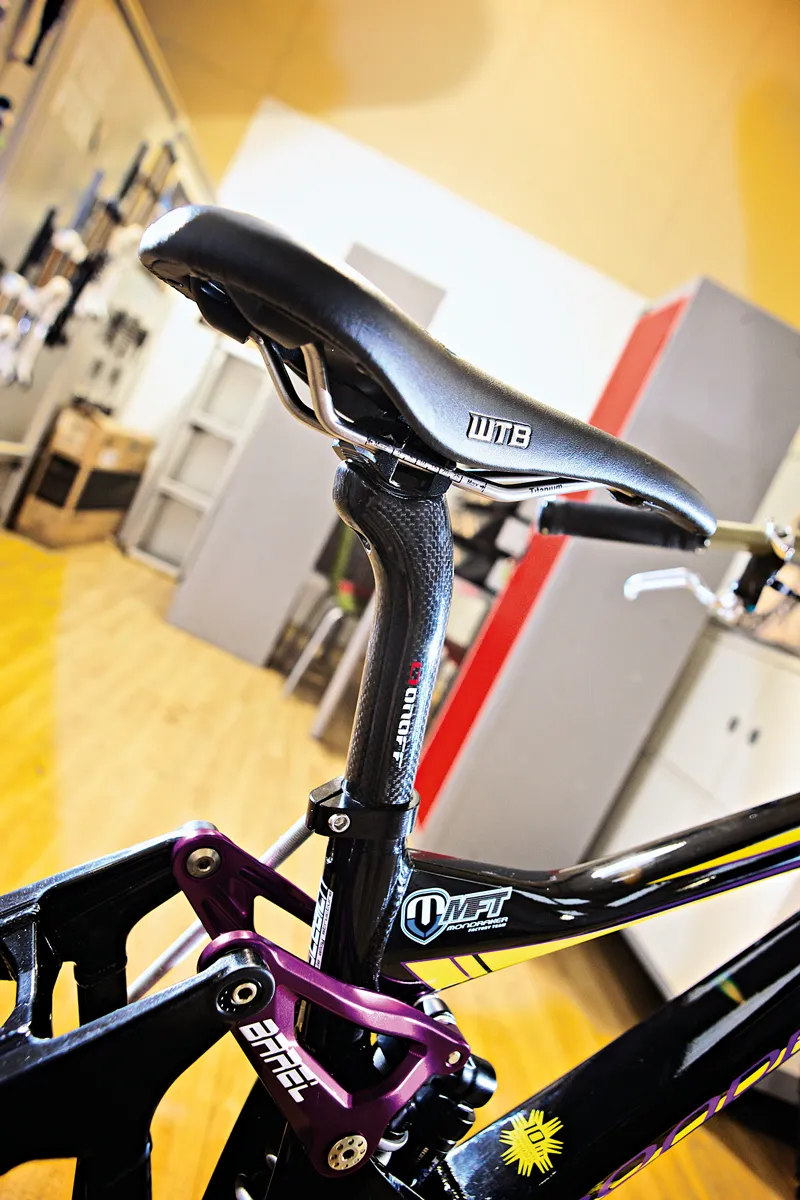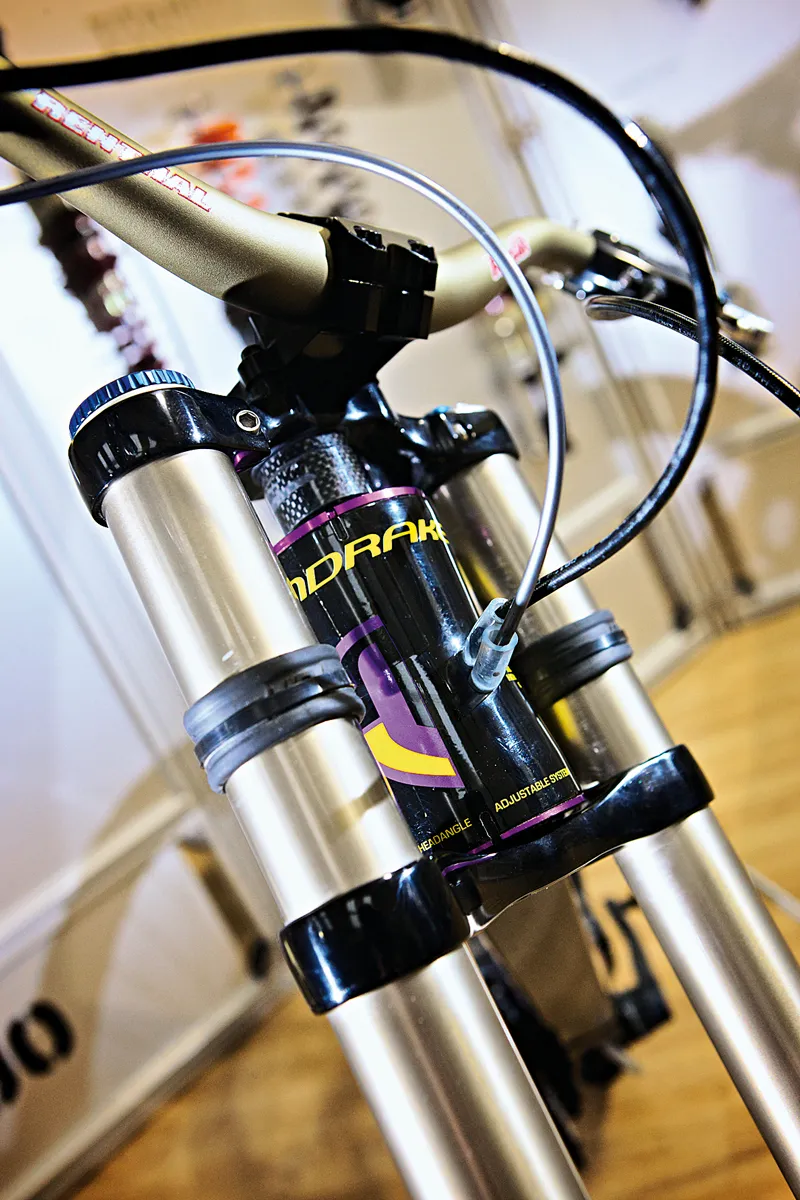Fabien Barel knows how to ride a bike fast – his two World Championship downhill titles and numerous World Cup wins are proof of this. Witnessing his speed will leave you speechless – his calculated technique and commitment to line choice are gobsmacking.
He also knows that races are won and lost in the blink of an eye, and will do everything in his power to make even the slightest difference. It’s this dedication that sets him apart. Like fellow Frenchman and 10-times world champ Nico Vouilloz, Fabien puts a massive emphasis on testing, helped by his extensive engineering background.
Working closely with Mondraker’s Cesar Rojo he used his vast knowledge to help shape the Summum into the versatile, race-ready bike we see today. Taking the top step at the Maribor World Cup in 2009 sealed the bike’s future, and it’s now one of the most sought-after machines on the market. But how different is Fabien’s bike to the Summum that’s available on the shop floor?
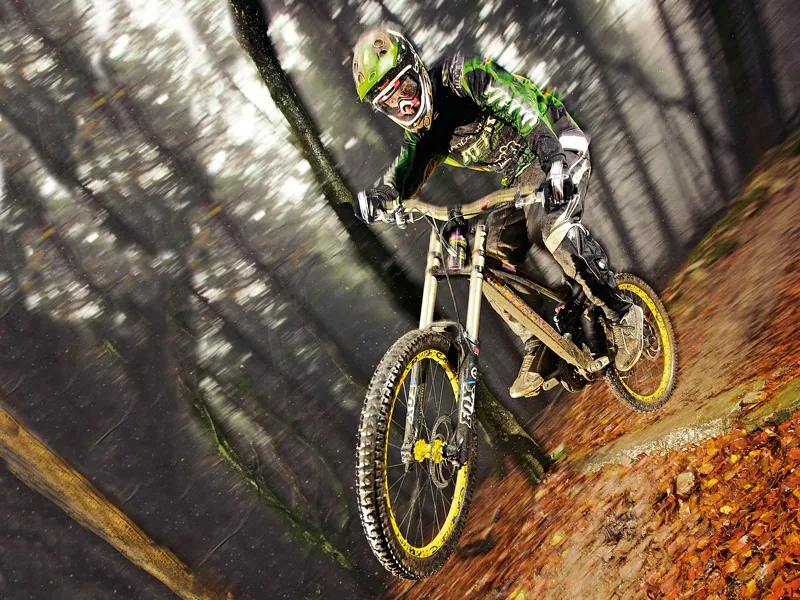
“The suspension system is identical to the Zero Suspension System we have on the production bike,” he says. “The tubing is slightly lighter and the geometry is made to be more efficient at higher speeds. It has a slacker head angle, lower bottom bracket and longer wheelbase. I like to have a stable bike so I can ride without effort.”
One of the main reasons riders are gravitating towards this Spanish wonder bike is the customisation it offers. The adjustable head angle (two degrees in either direction) and chainstay length (30mm of variation) mean the bike can be adapted to different tracks with minimal spanner work. Fabien likes to try out different setups depending on the terrain. He even slackens the head angle to a lazy 59 degrees for certain tracks.
When it comes to the chainstay alterations, Fabien says: “I use the chainstay adjustment more to balance myself on the bike depending on the steepness of the track. It does make a big difference to your position. It’s one of the modifications that’s harder to adapt to for me, so I try to use specific adjustments that I already know and have trained with.”
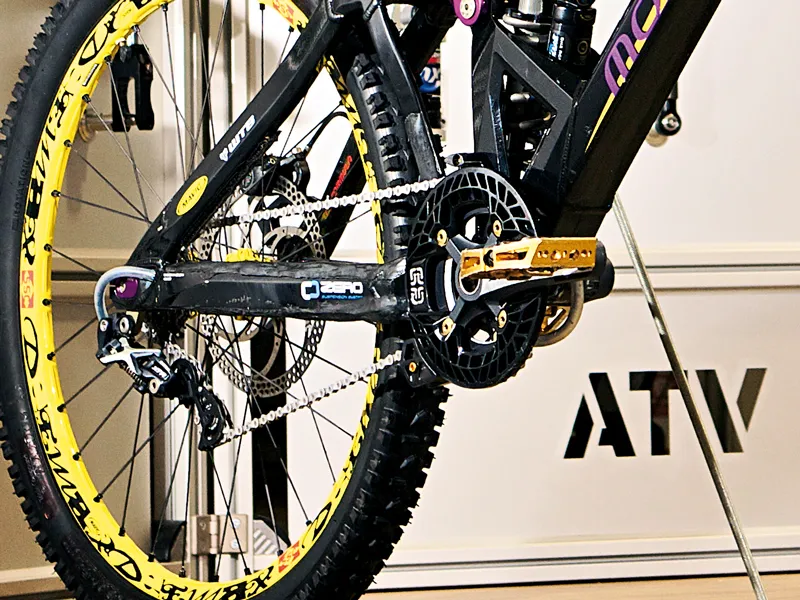
With his solid academic experience in engineering, Fabien will be the first rider to tell you about the importance of well tuned suspension. He and his long-term mechanic Paul Walton teamed up with Mojo some time ago now, working closely with Chris Porter and Fox Racing Shox.
During the winter months Fabien, Paul and the Mojo team carry out suspension training camps, during which they aim to get three shocks dialled for three different condition types. These camps consist of long days, plenty of fettling and some really intense riding for Fabien. “We’re able to go into detail with the damping and friction and use my feelings and times to help evolve the settings,” he says.
With the three shocks then tuned for the different conditions, Fabien spends run after run getting used to each one pre-season: “I don’t like to play around with the suspension at the races. I need to be used to the reaction of the bike.” Having the three shocks dialled in enables him to simply switch shocks depending on the conditions at a particular race, rather than spend numerous training runs getting one ready.
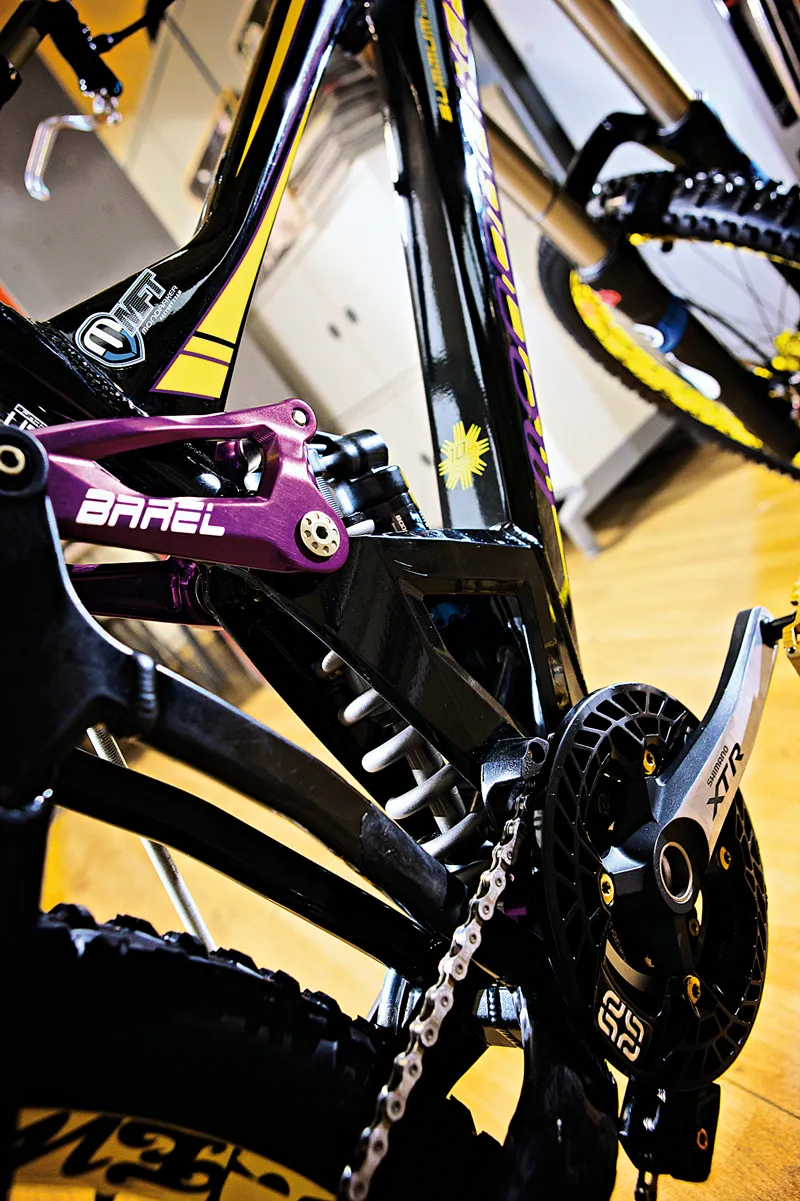
Mondraker Summum Pro Team – Key features
1 Drivetrain
A lot of the top riders out there have something a little quirky going on when it comes to the drivetrain. Fabien is no different, but his reasons are: “I use an e*thirteen SRS chain guide since I use an oval chainring because of my knee [he sustained a bad injury in 2009].” He also chooses to run a seven-speed system with a Shimano XTR mech, which features a custom short cage. This setup keeps the chain in place on rough sections and improves efficiency.
2 Shocks
Fabien spends many hours testing, developing and improving his suspension setup with some of the sharpest minds in the business. The end result is three different shocks, each one designed to suit different conditions. He explains further: “We do have some very different settings from one shock to the other. What you expect from the bike is different at high speeds on rough terrain compared to lower speeds in mud and over roots.”
3 WTB development
Fabien’s happy to be working with WTB because they’re a company with such serious roots in mountain biking. They’ve been working closely together to develop a high-quality all-mountain tyre with a lighter casing and all-out tubeless compatibility. Another goal is to develop a full-on downhill tyre. According to Fabien it’s going well: “We’re now at the point of finalising our soft rubber with the new downhill tyre that should come out very soon.”
4 New bars
“Renthal are a company with a strong character and image in motocross, and seeing the brand come into mountain biking is a big move and push for our sport,” Fabien says. Renthal’s Ian Collins says: “It was an obvious decision for us to work with Fabien and Paul [Walton]. Pairing up with the Mondraker Factory Team brings benefits greater than just an association with top riders. Their forward-thinking and unblinkered attitude in the quest for technical perfection complements Renthal’s design philosophy, fuelling the overall rate of product development and evolution.”
5 Stack height
You may have noticed that Fabien uses a lot of headset spacers in order to achieve the correct stack height on his bike. He likes his Mondraker to feel consistent, and making all the tweaks can alter crucial things such as handlebar height. Leaving plenty of steerer tube to play with means Fabien and Paul can easily alter the position of the spacers to counter any adjustments being made to the bike, leaving the bars at just the right level for Fabien to do exactly what he does best – pin it!
